Gold Coins Value: What Determines the Real Value? Let Me Show You.
I get asked one question more than any other: “Stephen, what’s the real value of a gold coin in terms of security ?” My answer? It kind of depends on who’s asking—and what they’re looking for. When determining a gold...

I get asked one question more than any other: “Stephen, what’s the real value of a gold coin in terms of security ?” My answer? It kind of depends on who’s asking—and what they’re looking for.
When determining a gold coin's value, the date, denomination, and detailed descriptions—including images—are crucial. These factors help collectors and investors accurately assess rarity, authenticity, and condition.
If you’re Googling “gold coin values,” you might think it’s all about weight and today’s spot price, with prices based on the current market conditions. But after decades building Global Coin into a trusted name for serious investors, I can tell you the true gold coins value isn’t just a number—it’s a story, a rarity, a legacy, often tied to iconic designs like Liberty and the historical significance of the dollar gold coin. Our comprehensive gold coin values guide includes up-to-date values listed for various coins, with regular updates to reflect the latest market trends. Some coins are valued down to the last cents, and even coins with the same denomination can have vastly different values based on their date and condition.
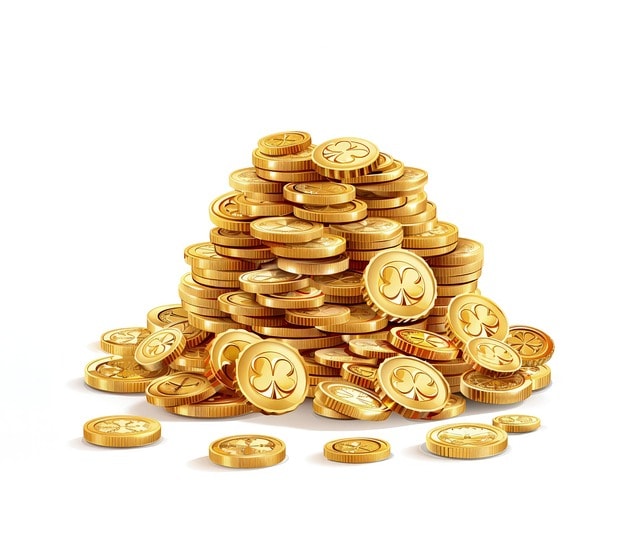
Let me walk you through what I’ve learned. This page isn’t a cookie-cutter rundown—it’s how I help the top 1% of collectors and wealth-focused individuals like you unlock the layered, strategic, and sometimes extraordinary value of a gold coin. Because at Global Coin, the success of our company and your future depend on top rankings in this elite game. Some coins are rare because only a few specimens exist, and occasionally, remarkable pieces are discovered in hidden collections or hoards. The way coins are struck at the mint can also impact their value.
The Starting Point: Melt Value Isn’t the Whole Story
Sure, every gold coin has a melt value—what it’s worth if you melted it down. The prices based on the current spot price of gold serve as a starting point for determining the melt value. Take a 1 oz 1986 American Gold Eagle: with gold prices hovering around $2050 per ounce today, that’s about $2050. But that’s just the floor, not the ceiling. Even coins with the same face value (denomination) can have very different values, sometimes down to the last cents, depending on their date and condition.
What really drives the value of a gold coin? It’s considered a mix of factors I’ve spent years mastering:
-
Rarity: Low-mintage coins, like the 1986 American Gold Eagle proofs, are scarce—and scarcity fuels value. The date and denomination are key factors in determining how many coins exist and their value.
-
Condition: A coin graded MS-70 by PCGS or NGC can double or triple in price compared to an MS-69. Perfection matters.
-
Demand: When markets wobble, coins like these become hot commodities for collectors and investors alike.
-
History: The 1986 Eagle marked America’s return to gold bullion coins—a milestone that adds depth to its worth.
-
Provenance: If it’s from a notable collection, that backstory can push its value even higher. Coins recently discovered in hoards or collections can also command significant premiums.
Gold coins are struck at the mint, and detailed descriptions and images are essential for evaluating their true worth.
At Global Coin, we’ve built our proprietary GCS Index to weigh these elements, ensuring we spot the coins others miss. It’s why we find our clients’ portfolios often quietly outshine the market—and why we’re obsessed with top rankings.
Understanding Gold Coin Prices
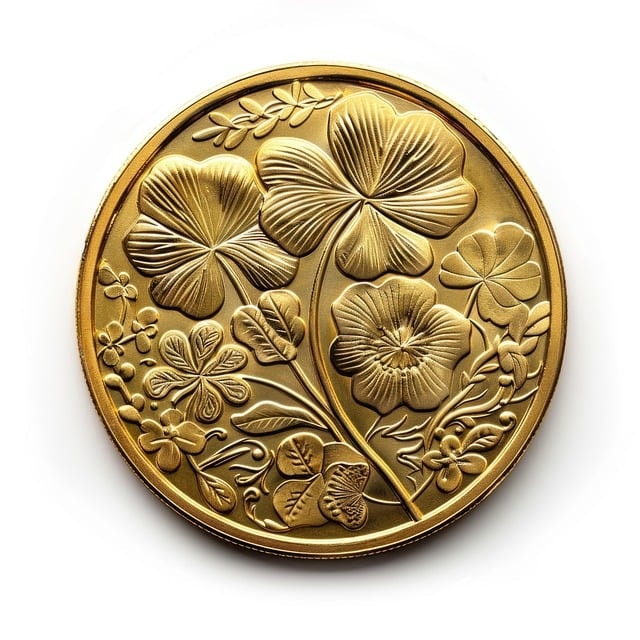
When it comes to gold coin prices, there’s more at play than just the weight of the gold and the current spot price. While the spot price of gold—essentially the market price for immediate delivery—serves as a baseline, the true value of a gold coin is influenced by a blend of factors that go beyond mere weight.
Price guides provide values listed for different coins, with regular updates to reflect market changes and ensure collectors have access to the most current information.
Market demand is a significant driver. Coins that are highly sought after by collectors and investors can command prices well above their melt value. For instance, a coin like the 1986 American Gold Eagle proof in pristine condition can fetch a premium due to its desirability and limited availability.
Rarity and condition are also pivotal. The date and denomination of a coin, as well as its condition, play a significant role in determining its price, sometimes down to the last cent. A coin with a low mintage or one that has been preserved in near-perfect condition can see its value soar. Collectors often pay a premium for coins graded MS-70 by PCGS or NGC, recognizing the perfection in these specimens.
Economic instability can further influence gold coin prices. During times of market turbulence, gold often becomes a safe haven, driving up demand and, consequently, prices. This was evident during past financial crises when gold prices spiked as investors sought stability.
In essence, understanding gold coin prices requires a holistic view that considers the spot price, market demand, rarity, condition, and broader economic factors. Using detailed descriptions and images can help collectors accurately assess a coin's value. Staying informed about these elements, and ensuring you receive a fair price by consulting up-to-date price guides can help you make savvy investment decisions and appreciate the true worth of your gold coins.
Why Most People Miss the Real Gold Coin Values
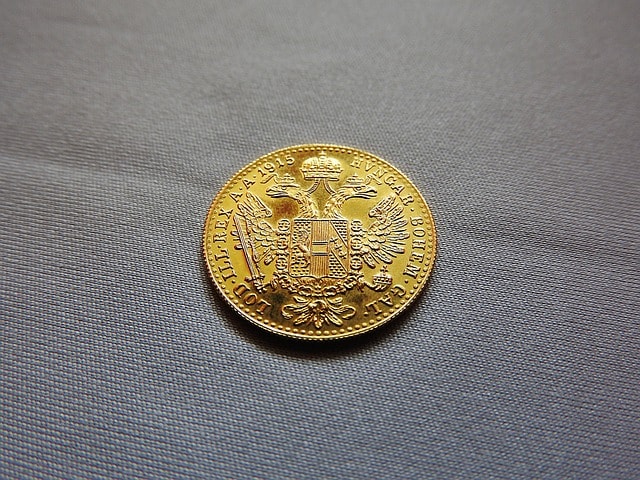
Here’s another place where I see folks stumble: they treat gold coins like a commodity with prices based solely on the spot price. “Spot price is $3000, so my coin’s worth $3000,” they say. But try pricing a 1986 American Gold Eagle proof in MS-70 condition that way, as it falls into the numismatic category. You can’t. Its gold coins value might hit $5000 or more—not because of its gold, but because it’s a rare, flawless piece of history. The date and denomination of a coin are critical in determining its true value, as some dates and denominations are much rarer than others and only a few specimens may exist.
That’s the edge I bring at Global Coin. We don’t sell gold by the ounce—we offer collectors full access to a market most never touch. Coins like the 1986-W Eagle proof, with a mintmark and mintage under 450,000, don’t just sit in vaults; they appreciate. When rare coins are discovered and come to market, they are often newly uncovered from collections or hoards, and only a handful may exist. And when they surface, they’re usually in our hands. To ensure you receive the best possible price when selling, always consult the values listed in reputable guides for your coin’s date, denomination, and condition. The success of our company and your future depend on top rankings in securing these gems.
Types of Gold Coins
The world of gold coins is diverse, with each type offering unique characteristics that appeal to different collectors and investors. Here are some of the most popular types of gold coins you might encounter:
-
American Gold Eagle: Minted by the United States Mint, the American Gold Eagle is a favorite among investors. Made from 22-karat gold, it comes in various denominations and weights, including 1 oz, 1/2 oz, 1/4 oz, and 1/10 oz. The obverse features the historic Liberty design, reflecting the symbolic importance of liberty in American coinage. The date the coin was struck and its denomination are key factors in determining its value. Detailed descriptions and clear images are essential for collectors to accurately identify and appraise these coins.
-
Canadian Gold Maple Leaf: Produced by the Royal Canadian Mint, the Canadian Gold Maple Leaf is renowned for its purity, being made from 24-karat gold. Available in similar denominations and weights to the American Gold Eagle, this coin is highly valued for its high gold content and beautiful design. The date and denomination, along with condition, play a significant role in its market value.
-
South African Krugerrand: The Krugerrand, minted by the South African Mint, was the first gold bullion coin to be issued in the modern era. Made from 22-karat gold, it is available in various denominations and weights and is known for its durability and historical significance. The year it was struck and its denomination are important for collectors and investors assessing its worth.
-
Chinese Gold Panda: Minted by the People’s Bank of China, the Chinese Gold Panda is unique for its annually changing design. Made from 24-karat gold, it is available in multiple denominations and weights and is a favorite among collectors for its artistic appeal. The date, denomination, and condition are crucial in determining its value, and high-quality images and descriptions help ensure accurate identification.
The U.S. dollar gold coin is also an important part of American numismatic history, with certain rare dates and denominations, such as the Liberty Head and other series, being highly sought after. Some rare coins may only exist in small numbers and are sometimes discovered in unexpected places, adding to their allure and value. Even coins with the same denomination can have different values, sometimes down to the last cent, depending on their date, condition, and rarity.
Each of these coins has its own set of features that can influence its value, including the current spot gold price and market demand. Whether you’re a seasoned collector or a new investor, understanding the different types of gold coins, their dates, denominations, and the importance of detailed descriptions and images can help you make informed choices that align with your financial goals.
Popular Gold Coins
When it comes to gold coins, certain names stand out as favorites among many collectors and investors. The American Gold Eagle, Canadian Gold Maple Leaf, and South African Gold Krugerrand are among the most popular gold coins in the world, each offering a unique blend of beauty, history, and value. These coins are not only prized for their high gold content but also for their numismatic value, which can increase significantly based on rarity, condition, and mintmark.
Take the American Gold Eagle, for example—a gold coin minted by the United States Mint and available in denominations of $5, $10, $25, and $50. Its iconic design and government backing make it a staple in countless collections. The Canadian Gold Maple Leaf is renowned for its exceptional purity and striking maple leaf design, while the South African Krugerrand is celebrated for its role in making gold coins accessible to the global market.
What makes these coins especially appealing is their potential for long-term appreciation. Many collectors seek out coins in pristine condition, knowing that even small differences in grade or mintmark can have a big impact on gold coin values. Whether you’re drawn to the artistry, the history, or the investment potential, these popular gold coins offer something for everyone in the numismatic world.
Gold Coin Grading and Authentication
Grading and authenticating your gold coins is a critical step in ensuring their true value and protecting your investment. Professional grading services like PCGS and NGC provide collectors with an expert assessment of a coin’s condition, assigning a grade on a scale from 1 to 70. This grade reflects everything from the sharpness of the design to the presence of any marks or wear, and it can make a dramatic difference in a gold coin’s value.
But grading is only part of the equation—verification is equally important. Completing the authentication process means verifying that your gold coin is genuine and not a counterfeit or altered piece. Many collectors experience a mix of anticipation and relief during the successful verification waiting period, knowing that a positive result adds both security and legitimacy to their collection.
Additionally, having your coins professionally graded and authenticated provides peace of mind when buying, selling, or insuring your collection. It ensures that you, and any future buyers, can trust the coin’s numismatic value and condition. In today’s market, taking the time to verify and grade your gold coins is not just a best practice—it’s essential for anyone serious about building a valuable and secure collection.
Gold Coin Market Trends
The gold coin market is dynamic, shaped by a variety of trends that can influence both the numismatic value and the gold content of coins. Many collectors and investors keep a close eye on these trends, knowing that factors like economic uncertainty, inflation, and geopolitical events can drive demand—and prices—up or down.
For example, during times of financial instability, gold coins often become a safe-haven asset, with rare coins commanding even higher premiums due to their scarcity and historical significance. Conversely, when the economy is booming, interest may shift to other investments, causing gold coin values to stabilize or even dip temporarily.
Staying ahead of these trends is key to maximizing returns and protecting your investment. Technologies like Ray I and Ray ID are increasingly used in the industry to verify authenticity and prevent counterfeiting, giving collectors added confidence in the coins they buy and sell. By monitoring market movements and leveraging the latest security tools, you can respond strategically—whether you’re looking to acquire rare coins, sell at the right time, or simply protect your collection for the future.
Storing and Protecting Your Gold Coins
Safeguarding your gold coins is just as important as acquiring them. Many collectors invest in specialized storage solutions—such as coin albums, protective capsules, or high-quality safes—to ensure their coins remain in pristine condition. The right environment is crucial: keep your coins in a cool, dry place, away from direct sunlight and moisture, to prevent tarnishing or other damage over time.
Security is another top priority. Consider additional measures like locks, alarms, or even video surveillance to protect your collection from theft or unauthorized access. When it comes time to sell or trade, using a secure website—like www.pcgs.com—adds another layer of protection, ensuring your transactions are safe and your coins are handled with care.
Additionally, always proceed with caution and complete all necessary security steps before finalizing any sale or purchase. By taking these precautions, you not only protect the physical condition of your gold coins but also preserve their value for years to come. In the world of gold coin collecting, a little extra attention to security and storage goes a long way in ensuring your investment stands the test of time.
Gold Coins as My Anchor in a Shaky World
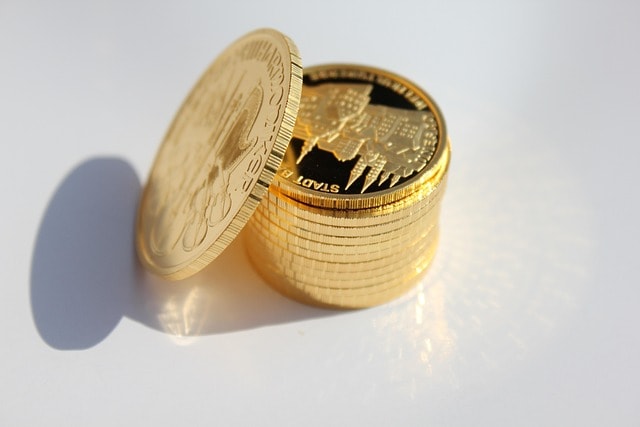
I’ve seen it with my high-net-worth clients: they’re not buying coins for fun. They’re shielding themselves from chaos. In a world of geopolitical tension and economic uncertainty, post-1986 gold coins—like that first minted 1986 American Gold Eagle—do more than hold value. They protect legacies, often worth thousands of dollars. They’re tangible in a way stocks or crypto never will be. I can hold one, pass it to my kids, or cash it out when I choose.
Back in volatile times, gold prices spiked while markets tanked, and coins like these held firm. That’s why I believe the value of a gold coin isn’t just financial—it’s peace of mind. And at Global Coin, we make sure investors see it’s the best peace money can buy. When it’s time to sell or pass on your gold coins, we help ensure you receive the full value they deserve.
Evaluating Your Gold Coin
Evaluating the true value of your gold coin involves a meticulous process that goes beyond just looking at its weight and the current spot price. Here’s a step-by-step guide to help you assess your coin’s worth:
-
Check the Coin’s Condition: The condition of a coin is crucial. Coins that are well-preserved and free from significant wear and tear are generally more valuable. Detailed descriptions and clear images are essential for accurate evaluation, as they help identify subtle differences in grading. Look for coins that have been graded by reputable services like PCGS or NGC, as a higher grade can significantly boost a coin’s value.
-
Assess the Coin’s Rarity: Rarity can dramatically impact a coin’s value. The date and denomination of the coin, as well as how many specimens are known to exist, are key factors in determining rarity. Coins with low mintage numbers or those that are hard to find in the market tend to be more valuable. Research the coin’s history and mintage to understand its rarity. Notable coins, such as the dollar gold coin, have sometimes been recently discovered in hoards or collections, which can impact their rarity and value.
-
Verify the Coin’s Authenticity: Ensuring your coin is genuine is essential. Examine its weight, size, and design details, and verify when and where the coin was struck. Counterfeit coins can be quite convincing, so it’s often worth getting a professional opinion. Trusted grading services can authenticate your coin and provide a certification that adds to its value.
-
Get Your Coin Graded: Having your coin graded by a third-party service like PCGS or NGC can provide an independent assessment of its condition and authenticity. A high grade can significantly increase the coin’s market value.
-
Research the Market: Stay informed about current market trends and prices. Consult the values listed in up-to-date price guides, which receive regular updates, to determine the current value of your coin—sometimes down to the last cents. Check online marketplaces, consult with coin dealers, and review recent auction results to get a sense of your coin’s value. Market conditions can fluctuate, so regular research is key.
By following these steps, you can gain a comprehensive understanding of your gold coin’s value, ensuring you make informed decisions whether you’re buying, selling, or holding onto your investment.
My Playbook for Unlocking Maximum Gold Coins Value
Here’s how I approach it—and how you can, too:
-
Chase Scarcity: I go after low-mintage coins like the 1986 American Gold Eagle proof. That’s where the upside hides.
-
Focus on Grade: I’ll pay more for an MS-70 over an MS-69 every time—a single point can mean thousands in gold coin values.
-
Build a Portfolio: I mix denominations, dates, and mint marks, like the 1986-W Eagle, to balance risk and reward. Mixing denominations and dates increases the chance of owning coins that few others exist, boosting rarity and potential value.
-
Trust the Right Partner: I’ve seen too many buy from flashy sites and miss the mark. Value lives in expertise, and that’s where Global Coin shines. When selling, always consult the values listed in updated guides to ensure you receive the best value for your coins.
Our GCS Index isn’t just a tool—it’s my secret weapon. It’s regularly updated to reflect the latest market trends. It’s how I ensure the success of our company and your future depend on top rankings, not guesswork.
Your Move
If you've ever wondered what the value of a gold coin could mean for you—especially post-1986 treasures like the American Gold Eagle—let's talk. My team at Global Coin has exclusive access to inventory others can't touch, and information paired with insights that keep us ahead.
Let's stop counting ounces and start building outcomes. Because the gold coins value I chase isn't about today—it's about what it'll mean for your tomorrow. Reach out. Let's make your future rank at the top of gold mine.
Related Articles
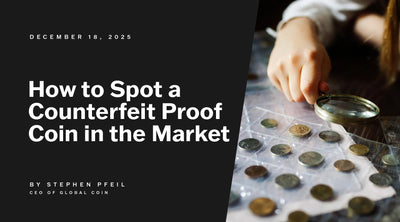
How to Spot a Counterfeit Proof Coin in the Market
How to Spot a Counterfeit Proof Coin in the Market In the world of numismatics, few things hold ...
Discover More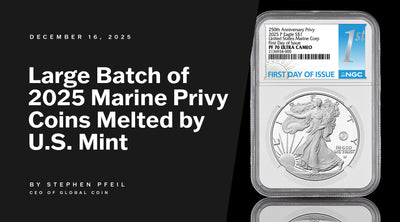
BREAKING NUMISMATIC NEWS: Large batch of 2025 Marine Privy Coins MELTED by U.S. Mint
BREAKING NUMISMATIC NEWS: Large batch of 2025 Marine Privy Coins MELTED by U.S. Mint A historic ...
Discover More
Tax Implications When You Sell Gold Bullion in Different States
Disclaimer: The following content is for informational purposes only and should not be construed ...
Discover More

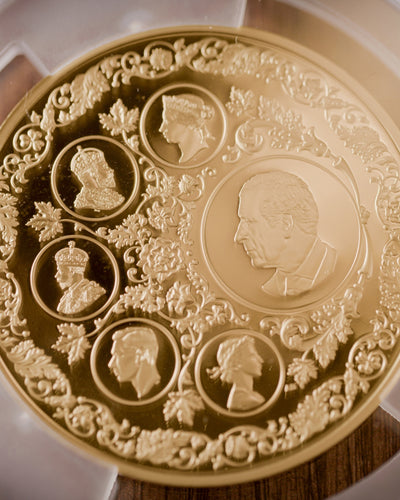
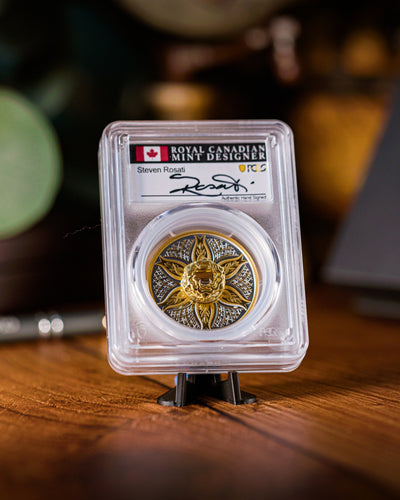
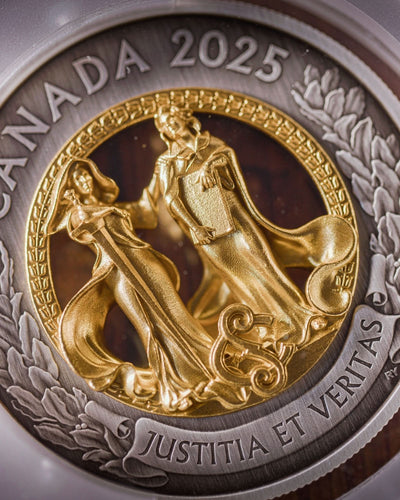
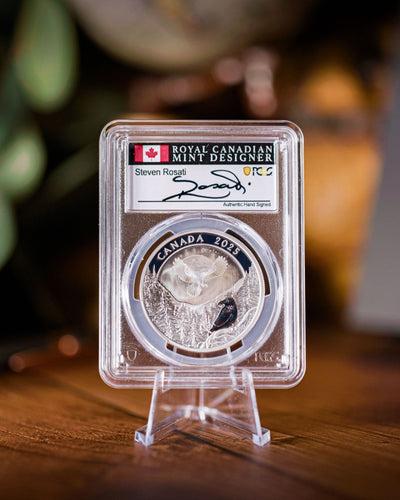
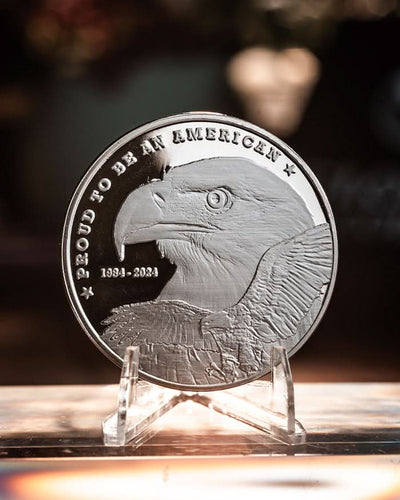
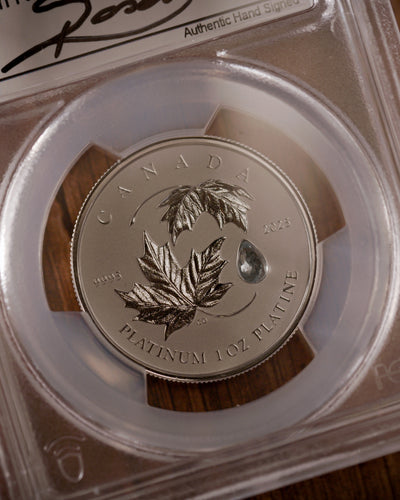
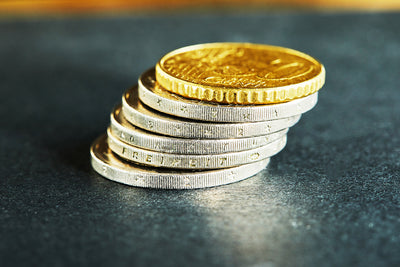
Leave a comment
This site is protected by hCaptcha and the hCaptcha Privacy Policy and Terms of Service apply.